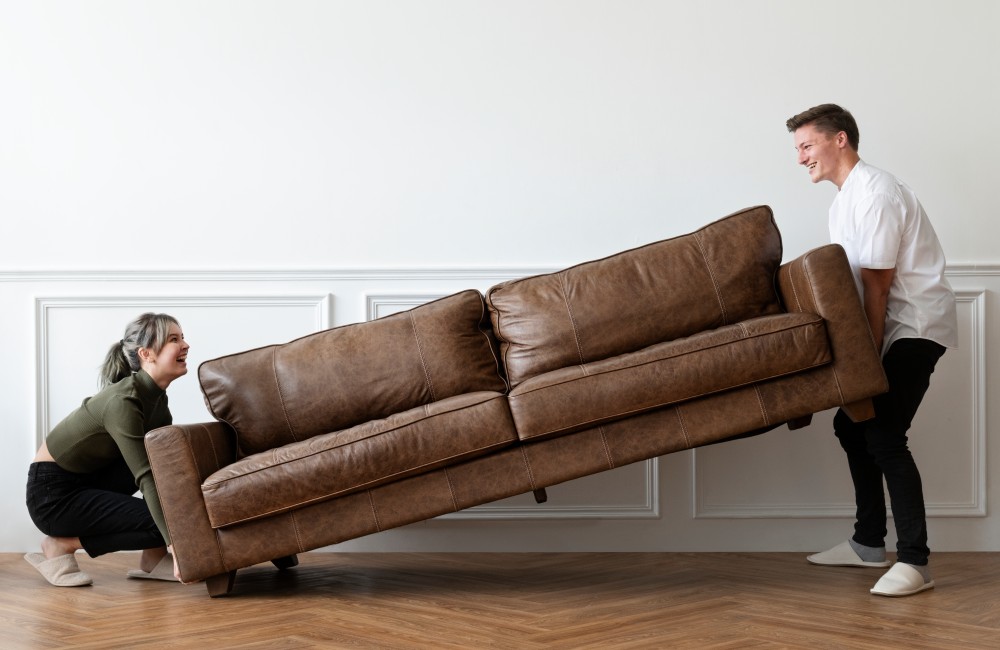How to Protect Floors from Furniture!
Image by rawpixel.com on Freepik
Keeping your floors in pristine condition can be challenging, especially with the constant movement of furniture. Scratches, dents, and scuffs can quickly ruin the appearance of your floors, whether they are hardwood, tile, laminate, or carpeted. Fortunately, there are several strategies you can employ to protect your floors from furniture damage. This detailed guide will explore various methods and tips to help you preserve the beauty and integrity of your floors.
Understanding the Risks
Before diving into protection strategies, it’s essential to understand the types of damage that furniture can cause to different flooring materials:
- Scratches and Scuffs: These are common on hardwood and laminate floors, often caused by dragging furniture across the surface.
- Dents: Heavy furniture can leave dents on softer flooring materials like wood and vinyl.
- Carpet Wear: Furniture can cause carpet fibres to flatten and wear out prematurely.
- Tile Cracks: Heavy furniture or sharp edges can crack or chip tiles.
Protective Measures for Various Floor Types
1. Hardwood Floors
Hardwood floors are prone to scratches and dents, but they can be protected effectively with the following methods:
- Furniture Pads: Attach felt or rubber pads to the bottom of furniture legs to prevent scratching. These pads are easy to apply and can be found in most hardware stores.
- Area Rugs and Runners: Place rugs under heavy furniture to distribute the weight and prevent direct contact with the floor. Runners can be used in high-traffic areas to reduce wear and tear.
- Furniture Coasters: Use coasters under furniture legs to help distribute weight evenly and reduce pressure on the floor.
- Rearrange Furniture: Periodically move furniture around to prevent prolonged pressure on one spot, which can cause dents.
2. Tile Floors
Tile floors are durable but can crack or chip under heavy or sharp-edged furniture:
- Non-Slip Furniture Pads: Use rubber or silicone non-slip furniture pads under furniture to prevent sliding and scratching.
- Protective Caps: Place protective caps on furniture legs to cushion the impact and prevent chipping.
- Avoid Dragging: Always lift furniture when moving it instead of dragging it across the tile surface.
3. Laminate Floors
Laminate floors are susceptible to scratches and moisture damage:
- Felt Pads: Attach felt pads to furniture legs to prevent scratches.
- Moisture Protection: Avoid placing furniture with metal legs directly on the floor to prevent rust stains and moisture damage. Use a protective barrier if necessary.
- Use Rugs: Place area rugs under heavy furniture to distribute weight and protect the laminate surface.
4. Carpeted Floors
Carpets can wear out and flatten under heavy furniture:
- Furniture Cups: Use wide furniture cups to distribute the weight of heavy furniture and prevent indentations.
- Move Furniture: Regularly rearrange furniture to prevent permanent indentations and wear in one spot.
- Protective Mats: Use protective mats under desks and chairs to prevent wear from constant movement.
General Tips for Floor Protection
- Use Furniture Sliders: Furniture sliders are handy tools that make moving heavy furniture easier and prevent damage to your floors. They come in various shapes and sizes to accommodate different furniture legs.
- Regular Cleaning: Keep your floors clean and free of debris that can cause scratches when furniture is moved. Sweep, vacuum, and mop regularly to maintain a clean surface.
- Be Mindful of Spills: Clean up spills immediately to prevent moisture damage, especially on wood and laminate floors.
- Trim Pet Nails: Pets can inadvertently scratch floors, so keeping their nails trimmed can help minimise damage.
- Check Furniture Feet: Inspect the bottoms of furniture legs regularly and replace worn-out pads or caps to ensure continued protection.
Choosing the Right Protection for Your Floors
When selecting protective measures for your floors, consider the following factors:
- Floor Type: Different floor materials require different types of protection. Ensure that the product you choose is suitable for your specific flooring type.
- Furniture Weight: Heavy furniture needs more robust protection. Use coasters, cups, or sliders designed to handle significant weight.
- Aesthetic Considerations: Choose protective products that match the aesthetic of your home. Felt pads, for example, come in various colours to blend with your floor and furniture.
- Durability: Invest in high-quality protective products that will last and provide consistent protection over time.
Conclusion
Protecting your floors from furniture damage is essential for maintaining the beauty and longevity of your home’s interior. By understanding the risks associated with different floor types and implementing the appropriate protective measures, you can prevent scratches, dents, and other damage. Whether you have hardwood, tile, laminate, or carpeted floors, the tips and strategies outlined in this guide will help you keep your floors looking their best. Regular maintenance and thoughtful protection will ensure that your floors remain a stunning and durable feature of your home for years to come.

